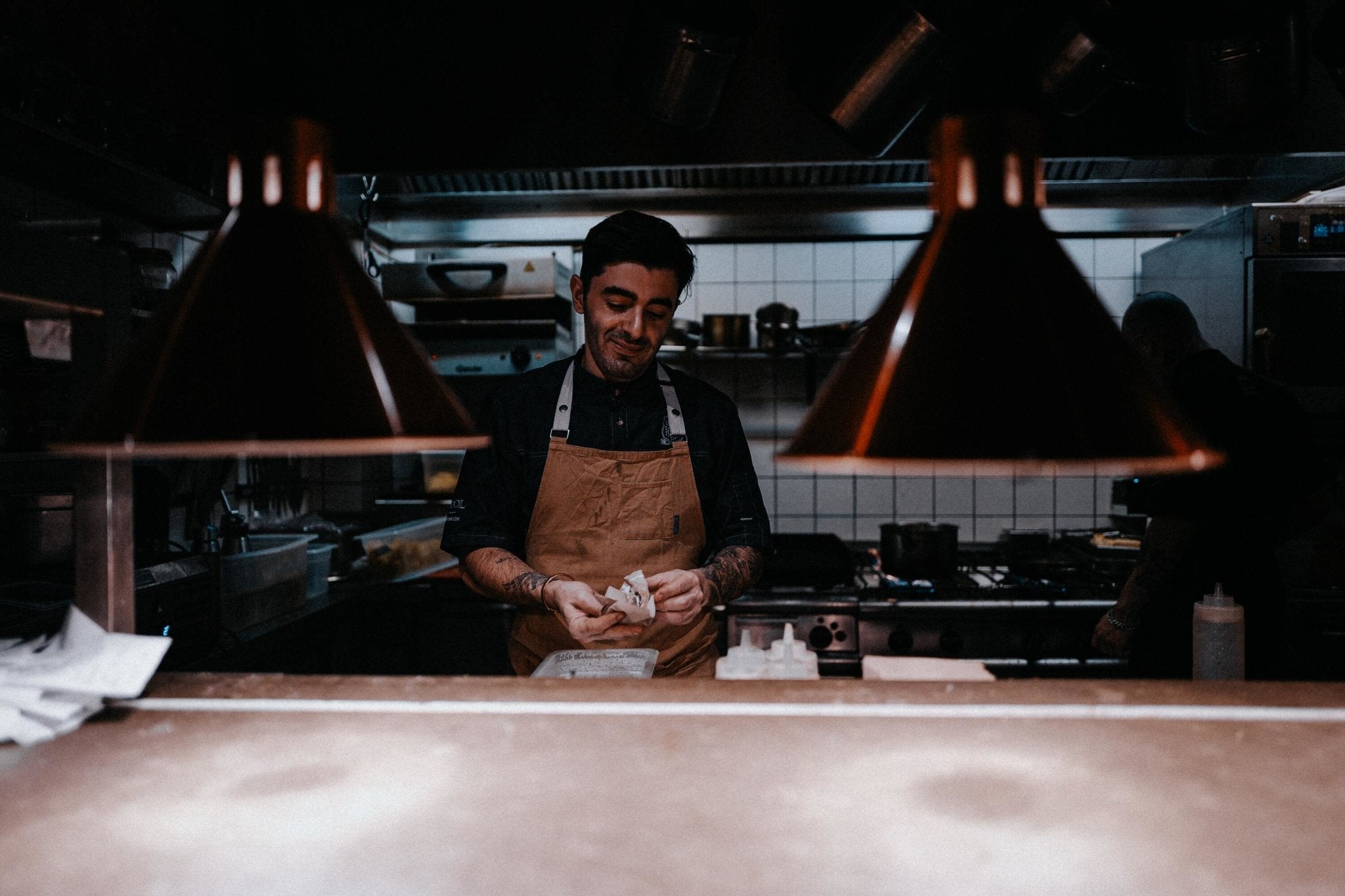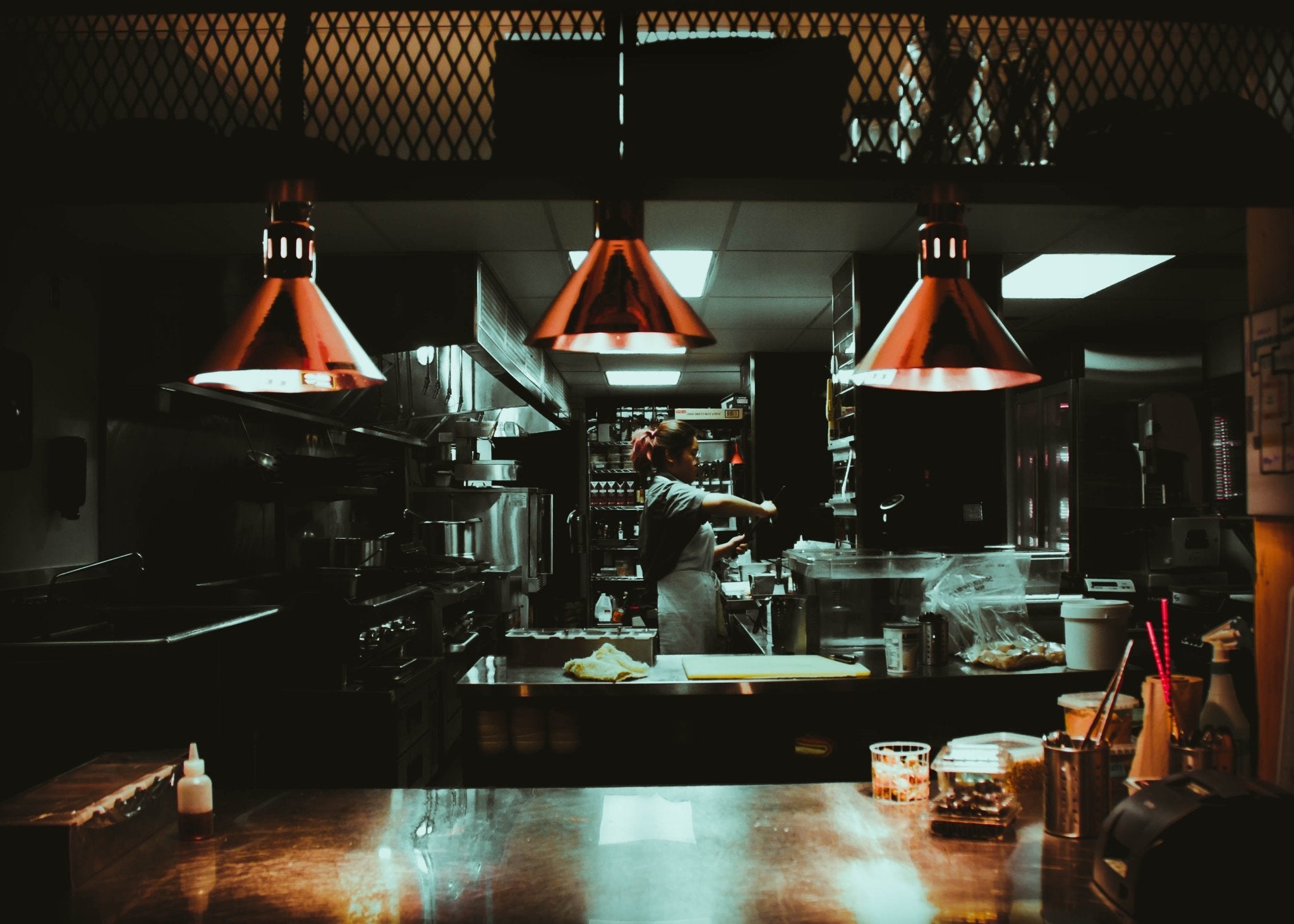Decoding Professional Kitchens: The Rotisseur Station

In our previous blog on Decoding Professional Kitchens, we took a deep dive into the Poissonnier station, mainly responsible for handling, preparing, and cooking all ingredients related to the sea. This week we'll be taking a closer look into the world of the Poissonier's sister station, and the station responsible for cooking and preparing all other meat items, commonly referred to as the Rotisseur Station.
The Rotisseur plays an extremely crucial part in the kitchen brigade system and is known to be the base station of the entire operation.
The word "Rotisseur" means "Roast Chef" in French and the station is, as the name suggests, primarily responsible for roasting and braising meats. In modern kitchens, the responsibilities of the Rotisseur extends beyond what its definition implies, they are also responsible for grilling and frying meats. These responsibilities were traditionally given to the Grillardin (grill chef) and Friturier (fry chef) respectively.

Expertise in Ingredients
With the station’s primary responsibility being preparing and cooking red and white meats to serve, it is essential for a Rotisseur to have an understanding of the different cuts of meat and all the techniques used to cook them. Most high-end restaurants provide between 2-3 different options of protein that come along with their main dishes. The three most common non-fish meats used across all restaurants are beef, pork, turkey, and chicken. Alongside an expertise in cooking these meats, the Rotisseur must also be familiar with less common and more niche ingredients, including, but not limited to duck, goose, pheasant, lamb, veal, goat, and rabbit.

On top of being an expert in the meat itself, Rotisseurs must have a strong intuition with regards to the degrees in which a meat can be cooked using the same method. This is particularly true for red meats such as beef that can be cooked to different degrees, such as rare, medium rare, medium, medium-well, and well done. While not very common, some restaurants also provide a "bleu" option, which is a level below rare. This level of steak requires an expert Rotisseur as the outside of the steak must appear fully cooked with the inside appearing to be almost completely rare.

Other general knowledge that a Rotisseur must be aware of are cross-contamination threats. As meats are highly contaminable ingredients, extra attention must be paid in consistently cleaning the station and tools. Cross-contamination must be avoided with regards to storing different meats in the fridge. The standard operational procedure typically includes the placing of meats in the order of red meat on the bottom, white meat in the middle and fish at the top.
Tools of the Trade
Rotisseurs use a wide array of different tools to cook their meat. Let's look at some of the knives that the station uses on a regular basis
When it comes to knives, the standard set used by the typical Rotisseur includes:
- A boning knife (approximately 5-inches in length)
- A santoku knife (approximately 7-inches in length)
- A filleting knife (approximately 6-inches in length)
- A cleaver (approximately 6-inches in length)

These knives all have a part to play in the daily routine of the Rotisseur, from pre-opening prep to the last slice before serving. The Cleaver is typically the first knife that is used when cutting up large parts of the animal. The design and weight of the cleaver allows the chef to cut through large portions of meat and bones. The boning knife is used next, and it is primarily used for removing smaller bones and cartilage from the flesh of the animal. Lastly, filleting knives are used to seamlessly filet and cut through different parts of the flesh.
The all-purpose knife that is used by Rotisseurs throughout their working day is the Santoku knife, which when translated to English from Japanese, means "Three virtues". This is an homage given to the blades impeccable ability to cut fish, meat, and vegetables. This all-purpose knife features a flat body with a slight curve which allows for an extremely smooth chopping motion.

If you are looking for great knives to up your game, Chef Sac has recently launched its first 7-inch Santoku Knife, ice hardened and made from premium German steel.
Other hand-held tools commonly used by Rotisseurs include:
- Carving Fork
- Cooking Thermometer
- Honing Rod
Carving forks and honing rods are essential to efficiently prepare the meat. Carving forks are used to hold the cooked meat in place as a knife is used to precisely cut it up into different portions, while honing rods are used to ensure knives are always kept sharp.

While many skilled Rotisseurs opt to use their intuition and experience for ensuring the meat is cooked at the desired level, cooking thermometers are standard across all kitchens as they ensure cooking consistency across all meat cuts.
Frying pans, pots, grills, and ovens are used for preparing the meat, depending on what dish is being served.
Service Time
During service, the Rotisseur is traditionally in charge of all meat items that do not include fish. This puts the station in a unique position as it will have to coordinate and communicate with other stations, particularly the Saucier and Entremetier station to have the final dish prepared.
The Rotisseur and Saucier (Station in charge of making sauces) must coordinate well with each other as sauces differ between different protein dishes. It is also not uncommon for the Rotisseur to work with the Entremetier (Station in charge of soups and stocks) to have the dish prepared as these stations end up sharing a part in the process of making certain menu items.

Wrapping Up
While the Rotisseur is traditionally a station that is purely responsible for cooking non-fish meats, it is come to see the roles of the Rotisseur and Poissonnier merged in modern kitchens as both stations are responsible for handling and cooking, grilling, and roasting protein. This means that to the average chef, the Rotisseur station is regarded to be an extremely traditional and niche role in the brigade system.

Meat is the centerpiece of all main dishes across most cultures around the globe, if you are aspiring to become a Rotisseur, you must be determined to master all areas associated with delivering the food to the customer. The number one deciding factor of success for all chefs is a drive to learn more and improve their skills daily, and this is no different for the meat cook. On top of all the knowledge a Poissonnier must have regarding their niche, a general overview and understanding of all stations is also essential.
Keeping a Rostisseur’s tools in mind, most Chef Sac’s knife backpacks and knife rolls have a dedicated slot for a meat cleaver and the honing rod. They have enough and more space to store all their culinary tools and knives. The Retro Style and Waxed Canvas knife backpacks are popular amongst Rotisseurs. Check out our complete collection here!

Whether you're a barbeque enthusiast trying to find a career on the kitchen floor, a culinary student aiming to become a Rotisseur, or a seasoned roast cook always looking to take his game to the next level, Chef Sac is rooting for you, and we'll always have your back.
- Tags: #Chef bag essentials #Chef bags #Chef Essential Tools #Chef's Backpack #Essential Chef Bag Tools #Essential Restaurant Tools #Kitchen essential tools #Kitchen Knives #Knife Bag #Knife Roll #Knives #Restaurant Tools #Sharp Knives bag for chefs bags for chefs brigade de cuisine chef backpack Chef bag Chef de Cuisine chef essentials chef gifts Chef Knife chef sac chef tools chef types Chefs chefs bag chefs gifts culinary arts culinary students culinaryarts gift ideas gifts for culinary students Junior Cooks kitchen bag kitchen gifts knife gifts Line Cooks restaurants roll bag Santoku Knife sharp knife Sous Chef Stagiaire Station Chefs types of chef
0 comments


